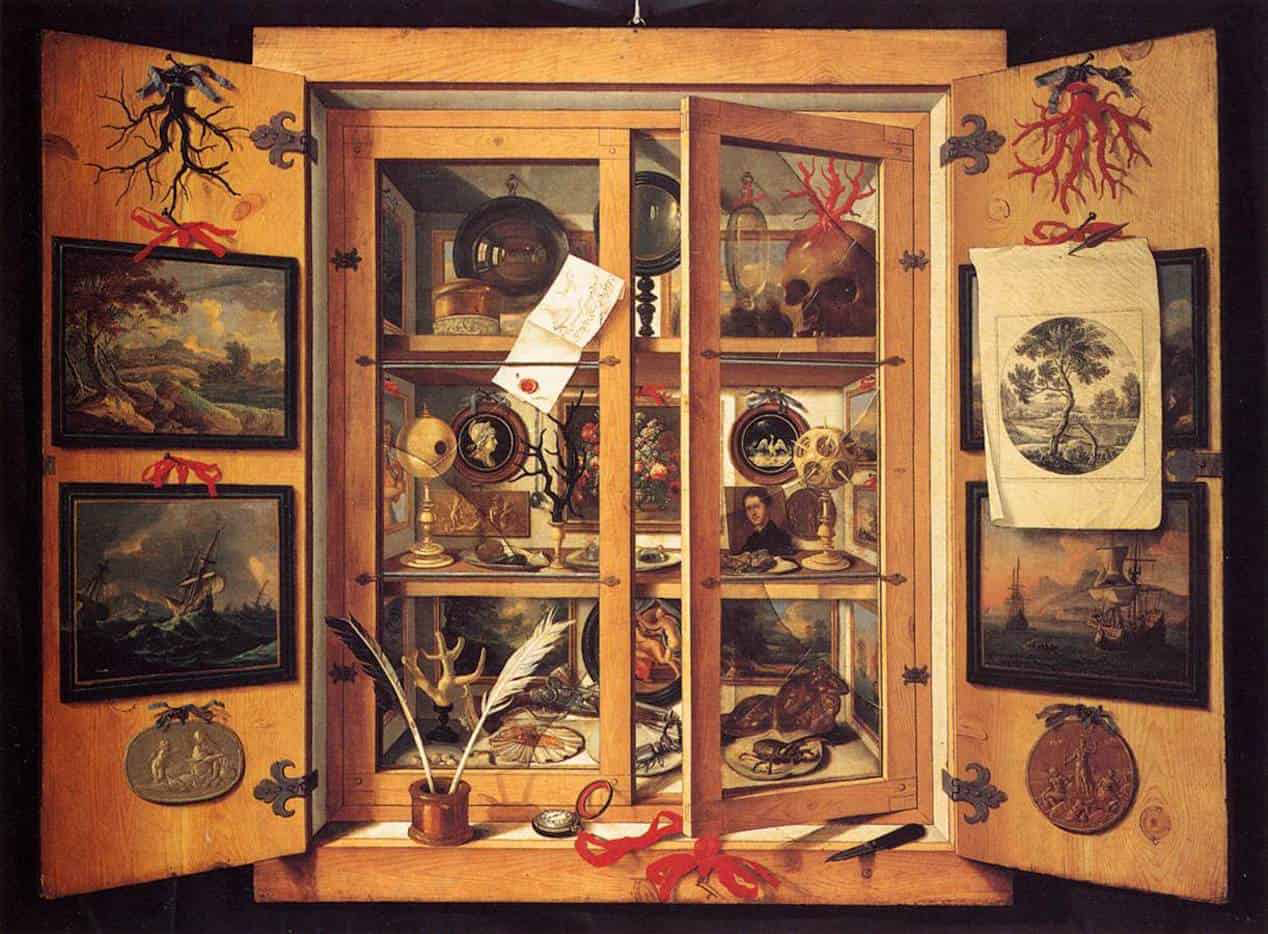
09 Jun Let’s build cabinets of curiosities – we’ll need them! A plea for sustainability.
While we as a society have indoctrinated sustainability to a certain extent, we are not even at the beginning when it comes to sustainability. When we salvage ideas, collect curiosities and cross them with existing knowledge in a cabinet of curiosities, a force unfolds that enables sustainable thinking and sustainable action.
For 20 years now, I have been working intensively and consciously on the creation and design of specific ecologies and their mode of action; with holistic spatial concepts that generate questions and answers; with incubators, hubs, innovation factories, grand garages, educational spaces, museums and cabinets of curiosities. And he has done so in various roles: as founding director of Tabakfabrik Linz, artistic director of Theater Hausruck, consultant for Austrian federal states, cities, companies or as Chief Visionary Officer for CMb.Industries and the Delta Group.
Thinking ahead and reflecting
In an increasingly dynamic world that is challenged by constant change, it is becoming significantly more important to find sustainable solutions in order to create a livable, more stable future in the present. But how can we ensure that we have the necessary means to support sustainable action and develop universal ideas? One possible answer lies in the mindset of sustainability and the associated pantries.
The value of sustainability
The word resource comes from the French and originally means “to spring forth”. Because resources are not processed, they are also called “raw” materials. So when we think of resources, we often think of natural resources such as water or wood. Raw materials that can be stored, bottled or stowed away.
But there is another type of natural raw material that is of equal importance to us humans: Thoughts, flashes of inspiration, inspirations, visions or creative ideas – often dismissed as unnecessary curiosities. These intangible resources should also be seen as raw materials that we need for a thriving development and are stored in a pantry. We can think about whether we need so-called supercomputers with AI applications, universities, garages, workshops or – as I think – a mixed-use concept. So: both as well as!
These pantries are supposed to be cabinets of curiosities that do not follow a museum exhibition logic. In the 16th century, these cabinets of curiosities were used to collect rare and unusual objects from nature, art, science and culture. The purpose was to expand knowledge, explore the world and arouse fascination. In other words, they generate associations, new combinations and action – sustainable action that leads to sustainable practices. In this way, we can solve the problems of the future and promote the new and the good.
Sustainability as an investment
The sustainability of resources requires continuous investment in education, research and development. And above all in the development of people. Only by filling and maintaining our “pantry of good ideas” can we ensure that we have the necessary knowledge and technologies to find sustainable solutions. Educational institutions, hubs and innovation spaces play an increasingly crucial role in this by creating a space in which ideas can flourish and become effective. These are spaces with excellent infrastructure, collaboration, a mission, talent, tolerance and technology.
Prototypical and utopian ideas
The pantry of good ideas includes both prototypical and utopian concepts. Prototype ideas are pragmatic solutions based on current knowledge and technologies. They can be implemented immediately and contribute directly to sustainability. Utopian ideas, on the other hand, are visionary concepts that represent an ideal future. They serve as inspiration and give us a direction in which we can strive. Both types of ideas are valuable and necessary to build a sustainable society.
Social effectiveness
The pantry of good ideas not only serves as a collection of resources, but also as a place of social impact. This is where people come together to exchange ideas, cooperate and work together on solutions. By establishing hubs, educational institutions and innovation spaces, we are creating places where a good future is generated. They become catalysts for change and offer space for joint innovation.
Conclusion
The availability of resources as a storehouse of good ideas is an essential building block for sustainable action and a future worth living. By investing in education, research and development, we create the basis for innovative solutions and social change. The combination of prototypical and utopian ideas enables us to take pragmatic steps while pursuing an inspiring vision.
My plea: Let’s fill the pantry of good ideas together and build a sustainable and future-proof society.


